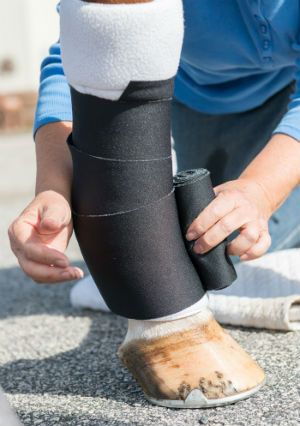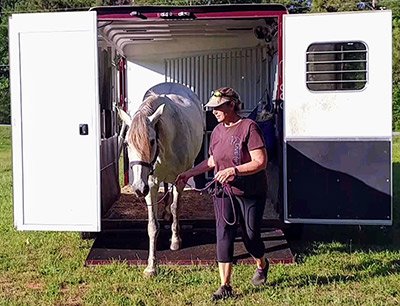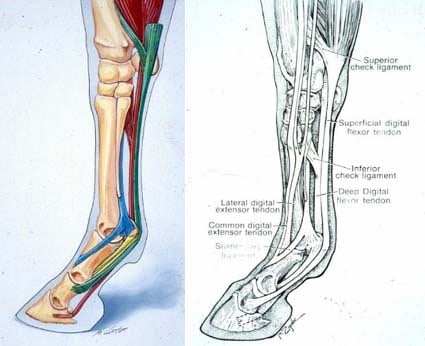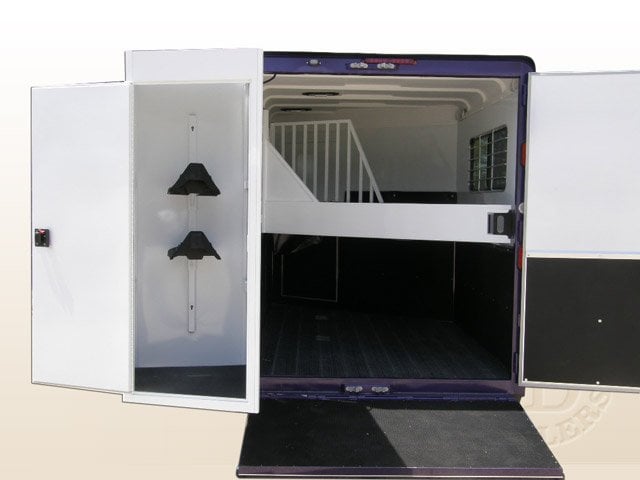7 Tips for How to Prevent Leg Injury in Your Horse Trailer

Tip #1: Wrap the Right Way!

To avoid this problem, it is always best to have an experienced horse person show you how to properly apply the leg wraps. Be sure to use sufficient cotton padding for the base layer. Also, use non-stretchy bandages that are less likely to bunch into tight pinching spots. Read more on proper leg wrapping technique here.
Tip #2: Be Careful of Shipping Boots Sizes.
Many horseman will completely avoid the risk of bowed tendons by simply using shipping boots with velcro fasteners. There are many different styles of shipping boots that range from short and sweet to long and full-coverage. Some styles extend up past the horse’s knees and hocks.
The main downside to shipping boots is that they come in preset sizes that don’t always fit your specific horse. Improperly sized boots may cause irritating rubs on the boning surfaces of your horse’s legs like the hocks or knees.
Find a style that fits your horse and make sure it is secured correctly. Make a few quick checks on your horse midway through a longer journey to ensure the boots haven’t slipped down around their ankles. While this doesn’t pose the same constriction danger as leg wraps, it could cause a horse some anxiety. Plus, your horse or a neighboring horse might step on the sagging boot causing even more distress.
Tip #3: Know When It’s Okay to Go Naked
Yes, you read that correctly! Sometimes it’s a good idea to leave your horse’s legs bare for a trailer trip. Leg protection is less vital if you are trailering your horse alone. Oftentimes, it is kicks from other horses that cause your horse injury.
In addition, an infrequent traveler may become nervous when the leg wraps or boots are applied. Keep his comfort and stress level in mind. It would better to have a calm horse without wraps than a highly agitated horse with poorly applied wraps because he was dancing around. Just make sure that you take the time to train him to stand and travel quietly with time.
Tip #4: Take the Time to Teach Trailer Etiquette

The first step to calming your horse is to make sure you have the right type of horse trailer. If you are planning to purchase a new trailer, look for one that is horse friendly. It should be light and airy inside with enough stall space that your horse feels safe and comfortable during the trip.
Next, take the time to teach your horse how to calmly load and unload from the trailer. This will greatly reduce his changes of getting injured while on the trailer. This is easier said than done of course. We’ve found that having a wide open trailer like the SafeTack slant load horse trailer design has made a huge difference for owners that need to teach a difficult horse how to load more easily.
Tip #5: Plan Your Exit Strategy
In a straight load trailer, horses have the possibility of injuring their rear legs while backing off of a step-down design. They sometimes place the rear foot slightly underneath the lip of the trailer causing damage to the front of their cannon bone during unloading.
One possible solution to this challenge is to purchase a trailer with a ramp. The ramp needs to be at a reasonable incline so your horse doesn’t slip. This is especially important if the ramp gets wet from rain or urine.

Finally, you can purchase a trailer that has a side exit door. This would allow you to load from the side and then walk straight off the back with a SafeTack reverse slant load trailer design. Or, you could load from the rear and walk straight off the side ramp.
Regardless, plan your exit strategy. Make it as easy as possible for your horse so he can calmly exit the trailer without worry of landing on unseen ground.
Nancy E., a Double D Trailers owner, has this to say about her SafeTack horse trailer: “I have a lot more control unloading. My horse can back out or go out head first. I always hate not knowing what kinds of footing you will park in so now I don’t have to worry about them jumping out on rocks, gravel, etc too fast. They go down the ramp nice and slow.”
Tip #6: Check for Sharp Surfaces
Before every load, give the interior of your trailer a once-over to check for sharp surfaces that could cut your horse’s legs. This is a problem especially with trailers that have thin quarter-inch rubber linings. This type of wall lining can crack easily to expose sharp metal fasteners that act like knives on your horse’s legs.
Read Tip #7 for a great solution to lackluster wall coverings.
Tip #7: Buy a Trailer With the SafeKick Wall System.

SafeKick is made from a maintenance free product called Polylite that is made of 95% plastic and 5% rubber. When kicked, the walls absorb the impact to greatly reduce the risk of injury. Besides protecting your horse’s legs, SafeKick walls also protect your valuable horse trailer from damage. Check out this video to see the SafeKick walls in action.
With these seven tips, your horse’s legs will be much better protected from injury. What other techniques do you use to protect your horse from leg injury in the horse trailer? We’d love to hear your input below!

